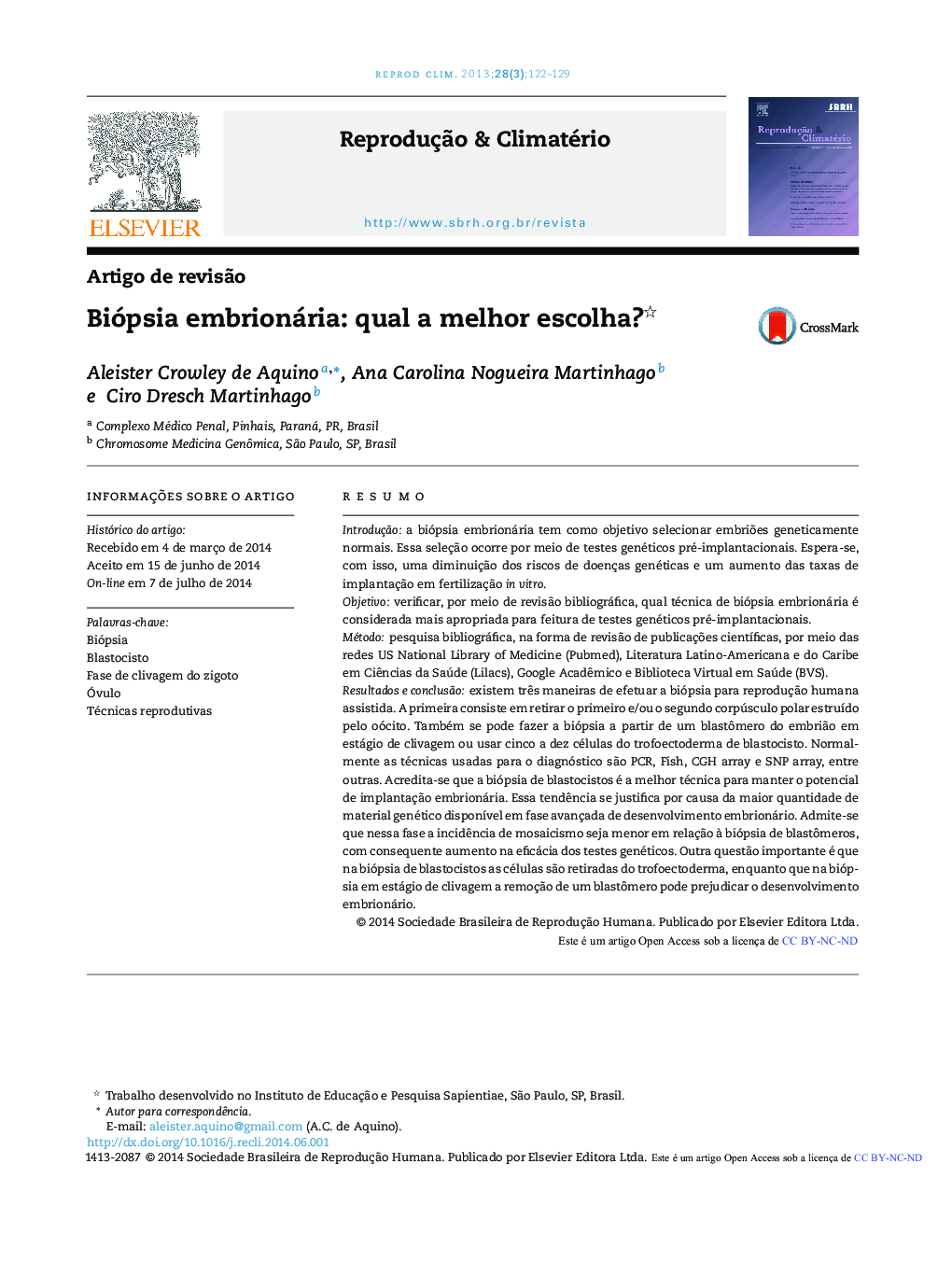| Article ID | Journal | Published Year | Pages | File Type |
|---|---|---|---|---|
| 3969849 | Reprodução & Climatério | 2013 | 8 Pages |
ResumoIntroduçãoa biópsia embrionária tem como objetivo selecionar embriões geneticamente normais. Essa seleção ocorre por meio de testes genéticos pré‐implantacionais. Espera‐se, com isso, uma diminuição dos riscos de doenças genéticas e um aumento das taxas de implantação em fertilização in vitro.Objetivoverificar, por meio de revisão bibliográfica, qual técnica de biópsia embrionária é considerada mais apropriada para feitura de testes genéticos pré‐implantacionais.Métodopesquisa bibliográfica, na forma de revisão de publicações científicas, por meio das redes US National Library of Medicine (Pubmed), Literatura Latino‐Americana e do Caribe em Ciências da Saúde (Lilacs), Google Acadêmico e Biblioteca Virtual em Saúde (BVS).Resultados e conclusãoexistem três maneiras de efetuar a biópsia para reprodução humana assistida. A primeira consiste em retirar o primeiro e/ou o segundo corpúsculo polar estruído pelo oócito. Também se pode fazer a biópsia a partir de um blastômero do embrião em estágio de clivagem ou usar cinco a dez células do trofoectoderma de blastocisto. Normalmente as técnicas usadas para o diagnóstico são PCR, Fish, CGH array e SNP array, entre outras. Acredita‐se que a biópsia de blastocistos é a melhor técnica para manter o potencial de implantação embrionária. Essa tendência se justifica por causa da maior quantidade de material genético disponível em fase avançada de desenvolvimento embrionário. Admite‐se que nessa fase a incidência de mosaicismo seja menor em relação à biópsia de blastômeros, com consequente aumento na eficácia dos testes genéticos. Outra questão importante é que na biópsia de blastocistos as células são retiradas do trofoectoderma, enquanto que na biópsia em estágio de clivagem a remoção de um blastômero pode prejudicar o desenvolvimento embrionário.
Introductionthe embryo biopsy aims to select genetically normal embryos. This selection occurs through pre‐ implantation genetic testing. It is expected the reduction of risk of genetic disorders and increase implantation rates in IVF.Objectiveto verify, through bibliographical revision, which embryo biopsy technique is considered more suitable for pre‐implantation genetic diagnosis.Methodbibliographical research, in the form of literary review of scientific publications via networks, US National Library of Medicine (Pubmed), Latin‐American Literature and Caribbean Health Sciences (Lilacs), Google Scholar and Virtual Health Library.Results and conclusionthere are three ways to perform the biopsy on assisted human reproduction. The first one consists in removing the 1st and/or 2nd polar body (if there was fertilization). You can also perform the biopsy from the one blastomere of embryo cleavage stage or use 5‐10 trophoectoderm cells blastocyst. Usually the techniques used for diagnostic purpose are PCR, Fish, CGH array, SNP array and others. Nowadays it is believed that blastocyst biopsy is the best technique in order to maintain the embryonic implantation. This tendency is justified by the larger amount of genetic material available in an advanced stage of embryonic development. It is assumed that in this stage the incidence of mosaicism is reduced with the consequent increase in the effectiveness of genetic testing. Another important question is that the blastocyst biopsy cells are removed from the trophoectoderm while inbiopsy incleavage stage, the removal of oneblastomerecan impairembryonic development.
